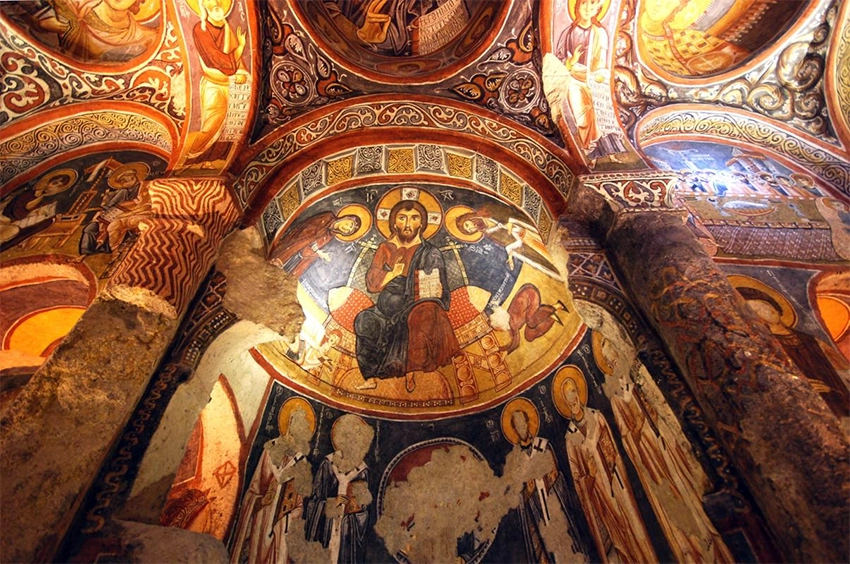Christianity in Cappadocia
Christian History in Cappadocia – From the Early Era to Byzantium
Early Christian Foundations
Cappadocia played a central role in the early history of Christianity. The region was home to great theologians of the 4th century such as Basil the Great of Caesarea and the two Gregories, who deeply shaped Christian doctrine. According to UNESCO, small monastic communities began carving shelters and monasteries into the volcanic tuff rocks under the guidance of Basil’s teachings. St. Peter himself referred to Cappadocia in his letters to imprisoned Christians, and by the 4th century the region had become both a spiritual retreat and a stronghold of Christian life.

Churches and Byzantine Art
The soft volcanic landscape made it possible to carve out entire churches and monastic complexes. The Göreme Open-Air Museum, a UNESCO World Heritage Site, preserves some of the finest examples of Byzantine art. Churches such as Tokalı (Buckle Church), Çarıklı, and the Dark Church (Karanlık Kilise) are adorned with vivid frescoes depicting New Testament scenes painted between the 9th and 13th centuries. During the Iconoclasm period (8th–9th centuries), figural imagery was banned and walls were decorated mainly with simple crosses. Later, however, richly colored frescoes returned, and in some places like the Three Crosses Church in Red Valley, the older cross motifs remain side by side with later portraits of Christ and the saints.
Monastic Life and Defensive Structures
Monasticism in Cappadocia developed both in communal and solitary forms. Basil the Great established rules for monastic life that emphasized prayer, work, and shared living. Many monasteries became vibrant centers of spirituality until the arrival of the Seljuks in the 11th century. Because of repeated Arab raids, locals also expanded underground defense systems Kaymaklı and Derinkuyu are the most famous examples where entire communities could hide for weeks.
Notable Churches and Valleys
- Göreme Open-Air Museum: Features 8th–10th century frescoes with scenes such as the Holy Trinity and the Virgin on the Throne.
- Tokalı, Elmalı, Yılanlı, El Nazar Churches: Each with well-preserved fresco cycles.
- Barbara and Basil Chapels: Small but significant early monastic shrines.
- Ihlara Valley: Known for cave churches like Ağaçaltı Church decorated with vivid biblical scenes.
- Soğanlı Valley: A more secluded area with chapels scattered among the rocks.
Visiting Information
- Tickets & Passes: Major sites like Göreme Open-Air Museum, Derinkuyu, and Kaymaklı require tickets and accept the Museum Pass. Smaller chapels in Paşabağ or Çavuşin are often free.
- Opening Hours: Göreme Open-Air Museum is generally open from 08:00–19:30 (times may vary, so check in advance).
- Guides & Tours: While there are information panels, a local guide provides deeper context. Green Tours and church-focused itineraries usually include these stops.
- Best Time to Visit: Arrive early in the morning to avoid crowds. Interiors are cool in summer but damp and cold in winter.
- Etiquette: Shoes may need to be removed in some chapels. Maintain silence, avoid flash photography, and show respect if liturgy is taking place.
Tips for Visitors
- Photographing Frescoes: Use a tripod and higher ISO instead of flash, especially in the Dark Church.
- Hot Air Balloon Views: Early morning balloons often float above Göreme and create unique photo opportunities from outside the museum.
- Underground Cities: Narrow, humid tunnels may be challenging for visitors with asthma or claustrophobia; watch your step and mind low ceilings.
- Safety: Many churches have uneven floors and low arches walk carefully to avoid tripping or hitting your head.



